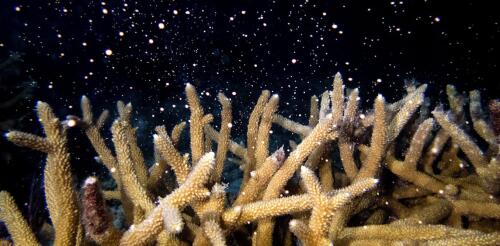Coral
The world’s coral reefs are like underwater cities, bustling with all kinds of fish and sea animals. Coral reefs cover less than 1% of the ocean, but they support an estimated 25% of all marine species, including many important fish species. The economic value of the services that these complex ecosystems provide is estimated at over US$3.4 billion yearly just in the U.S. Today, rising ocean temperatures threaten many reefs’ survival. When ocean waters become too warm for too long, corals expel the colorful symbiotic algae, called zooxanthellae, that live in their tissues – a process called coral bleaching. These algae provide the corals with food, so bleached corals are vulnerable to starvation and disease and may die if the water does not cool quickly enough. With global ocean heat at record levels, scientists have confirmed that a global coral bleaching event is underway. Since the beginning of 2023, corals have been dying in the Indian, Pacific and Atlantic...
Most people associate hurricanes with high winds, intense rain and rapid flooding on land. But these storms can also change the chemistry of coastal waters. Such shifts are less visible than damage on land, but they can have dire consequences for marine life and coastal ocean ecosystems. We are oceanographers who study the effects of ocean acidification, including on organisms like oysters and corals. In a recent study, we examined how stormwater runoff from Hurricane Harvey in 2017 affected the water chemistry of Galveston Bay and the health of the bay’s oyster reefs. We wanted to understand how extreme rainfall and runoff from hurricanes influenced acidification of bay waters, and how long these changes could last. Our findings were startling. Hurricane Harvey, which generated massive rainfall in the Houston metropolitan area, delivered a huge pulse of fresh water into Galveston Bay. As a result, the bay was two to four times more acidic than normal for at least three...

